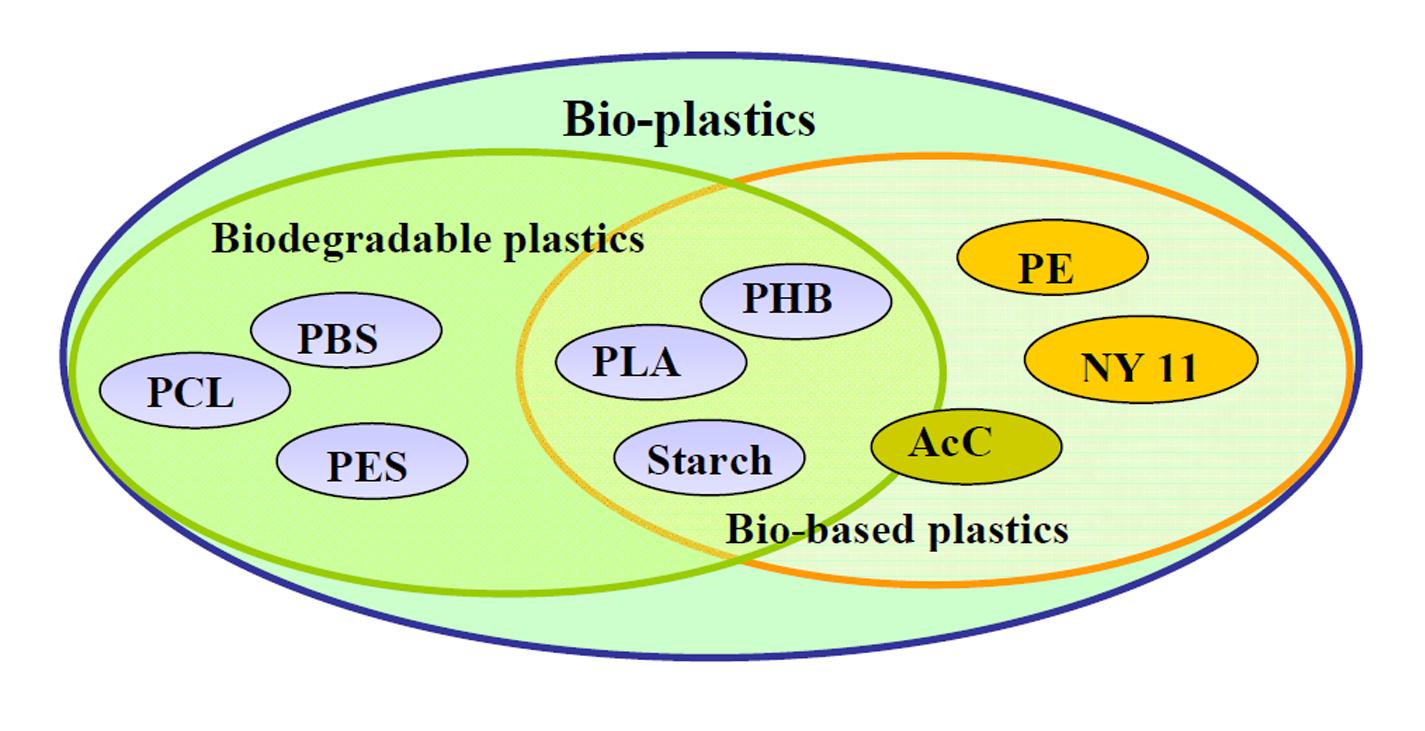The word bioplastic has been used by manufacturers to mean either, or both, a material that has been made (partially or in full) from a natural ‘biological’ source or one that it is biodegrable.
In other words, bioplastics fall into three principal categories, materials that come from a biological starting point, such as plants, and those that degrade in a natural setting, such as compost.[1] This diagram shows that there are few examples that are both biological in origin and can biodegrade[2].

Yutaka Tokiwa and others, ‘Biodegradability of Plastics’, International Journal of Molecular Sciences, 10.9 (2009), 3722–42 <http://www.mdpi.com/1422-0067/10/9/3722/> [accessed 7 June 2017]. 3723
Bioplastics are good because they mean we are not using up valuable oil reserves (although plastics packaging uses only 2% of all crude oil production[3]). However, there are concerns that they use up valuable land that has to be diverted from growing food crops, and feeding livestock.[4]
The biodegradability of plastics has been called into question too, it is suggested that early biodegrable plastics from the 1980s did not disappear completely and left behind microscopic plastics debris, these microplastics caused problems for the environment and wildlife.[5]
Research into improved bio-based plastics is currently being carried out; BioPET will have the biggest production capacity in the following years and other materials such as PHA and PLA being on an upward trend until 2020, but there also needs to be regulated and standardised government policies in the development and waste management of these materials.[6]
There are issues with the management of bioplastics, both bio-sourced and biodegradable, within the waste stream. Biodegradable plastics will release harmful gases such as methane within a landfill setting[7] and their compostability relies heavily on the correct level of heat and water, which can only be provided within an industrial setting.[8]
They can also create problems if they become part of the recycling stream as they will contaminate and undermine the structure of the resultant material.[9] Because of this threat to the recycling process, the European Commission suggest that more research is needed before biodegrable products are approved and promoted.[10]
The United Nations Environment Programme reports that there is evidence that littering behaviour is influenced by the product being labelled biodegradable and as such, biodegradable plastics will not alleviate litter in the oceans.[11]
[1] Kenneth Geiser, Materials Matter: Toward a Sustainable Materials Policy (Cambridge: Massachusetts institute of Technology, 2001). 297
[2] Yutaka Tokiwa and others, ‘Biodegradability of Plastics’, International Journal of Molecular Sciences, 10.9 (2009), 3722–42 http://www.mdpi.com/1422-0067/10/9/3722/ [accessed 7 June 2017]. 3723
[3] Recyle More.
[4] ‘Costing the Earth. The End of Plastic’ (BBC Radio 4, 2013).
[5] Nigel Whiteley, Design for Society (London: Reaktion Books, 1993). 73
[6] Auxiliadora Prieto, ‘To Be, or Not to Be Biodegradable… That Is the Question for the Bio‐based Plastics’, Microbial Biotechnology, 9.5 (2016), 652–57. 656
[7] Laurel Miller and Stephen Aldridge, Why Shrink-Wrap a Cucumber? The Complete Guide to Environmntal Packaging (London: Laurence King Publishing, 2012). 60
[8] Miller and Aldridge. 63
[9] Miller and Aldridge. 63
[10] European Commission, Analysis of the Public Consultation on the Green paper ‘European Strategy on Plastic Waste in the Environment’ - Final Report, 2013 http://ec.europa.eu/environment/waste/studies/pdf/green_paper_plastic.p… [accessed 3 May 2017]. 67-68
[11] United Nations Environment Programme, Biodegradable Plastics & Marine Litter: Misconceptions, Concerns and Impacts on Marine Environments, 2015. 31
